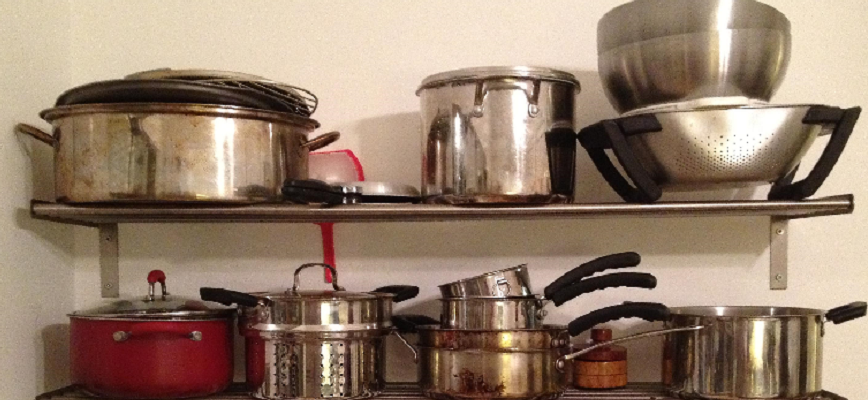Yes, they are.
They are made by skilled metal spinners using a variety of hand tools and metal spinning lathes. The aluminium pan that you fried your egg in this morning started out as a simple “blank”. Take a look at this informative video to see how a “blank” becomes a pan.
CNC Lathes
The process begins with the stamping of the company details into the centre of the “blank” or metal disc that will eventually become the base of the pan.
The blank is then clamped onto the chuck of the metal spinning lathe, which is a metal mould the size of the inside of the pan.
The computer operated spinning tool then moves in, and a rotating wheel pushes the aluminium around the chuck, shaping and moulding the metal into the desired shape.
It works in a similar way to a potter moulding clay with their hands. However, metal spinning lathes move sideways and potters work up and down.
The machine then trims off any excess aluminium. The trimmings are gathered for recycling as the metal is expensive to mine.
After final trimming and smoothing of the edges it has taken only 4 minutes to make a 32 litre pot on this computer driven metal spinning lathe.
The pot is then removed from the lathe and taken to have handle holes punched into it. Then aluminium handles are riveted onto the pan.
The pan is now complete and in a fraction of the time that it takes to make smaller items on a hand lathe.
Hand Lathes
Metal spinning on a hand lathe is not a precise science and so needs to be carried out by an experienced specialist who has an eye for his craft.
The craftsman will use a range of hand held tools, one of which is the scissor tool. This replaces the rotating tool of the computerised metal spinning lathe.
As well as pans, many other things are made by metal spinners on lathes. Commercial light reflectors for light bulbs, cake tins, sausage funnel.
Metal spinners can use a wide range of tools to achieve varying effects on the metal object being made.
Many types of metals can be spun but aluminium and steel are very formable metals so they provide the best results.
And that is how your shiny pots and pans have been made. Quite fascinating!
I enjoy writing about how things are made, if there is an item that you’ve been pondering let me know in the comments.

Be the first to comment on "Pans? Made on a Metal Spinning Lathe?"